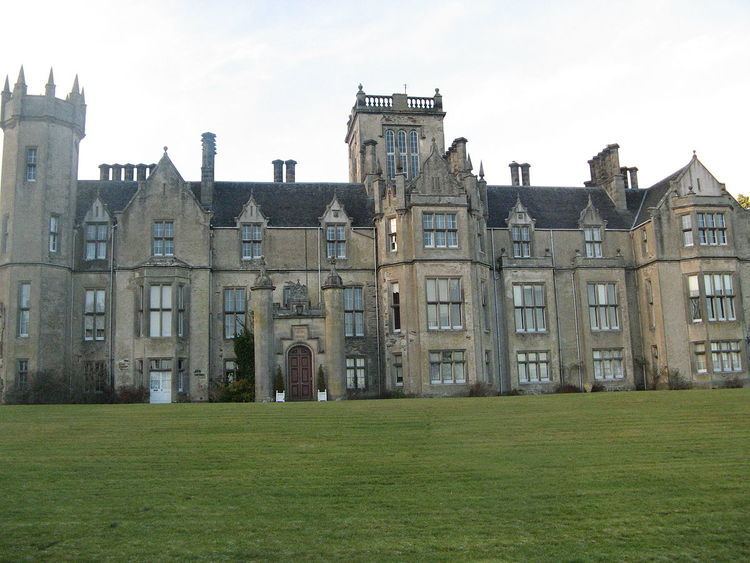Name Sir John | ||
 | ||
Robert John Abercromby was born 14 June 1850 in London and became the seventh Abercromby baronet on the death of his father at the end of 1872. His inheritance included the family estates of Birkenbog and Forglen as well as land in Ireland. The main family seat was Forglen House situated to the north west of Turriff in Aberdeenshire. He was Deputy Lieutenant of Aberdeenshire and Banffshire and was also a Justice of the Peace in both counties. Commissioner of Supply was another role he fulfilled.
Contents
Ancestry
Abercromby was the son of George Samuel Abercromby (1824–1872) and Agnes Georgina, who was the daughter of John Cavendish, 3rd Earl of Kilmaine. The couple had three other sons, George Cosmo, Cavendish Douglas and Douglas Charles. They also had two daughters.
Life
Abercromby was born in London but as his father succeeded to the family estates in Scotland and Ireland during 1855 when Abercromby was five years old, his formative years were spent at Forglen House. He was educated at Eton College. In November 1872 Abercromby inherited the estates from his father becoming the 7th in the line of Abercromby baronets.
The main family seat was Forglen House in Turriff, Aberdeenshire and he continued to make improvements to the house and policies that had been initiated by his forebears. The Abercromby's also owned land in Ireland as his grandfather, Sir Robert Abercromby, 5th Baronet, had bought most of the town of Fermoy from fellow Scotsman John Anderson during the first quarter of the 19th century. Robert John Abercromby, 7th baronet, is recorded as the owner of 434 acres of land in County Cork during the 1870s. and Fermoy House is listed as the family seat in Ireland. Inchdrewer Castle also formed part of his inheritance and MacGibbon and Ross list it in his ownership in 1887.
Abercromby served on several committees including being Convenor of the County Lunacy Board, chairman of the Parochial Board (when these became civil parishes he was unopposed as Chairman of the new committee) and a member of the Banff County Road Board. He was appointed Deputy Lieutenant of Banffshire from 1874, then Vice-Lord-Lieutenant of Banffshire from 1892. From 1876 he was also Deputy Lieutenant of Aberdeenshire. Another role he undertook was as Justice of the Peace in Banffshire and Aberdeenshire and Commissioner of Supply for both counties, although he was less active within the jurisdiction of the latter.
On 26 June 1883 Abercromby married the only daughter of Eyre Coote, who was the son of the British Army officer of the same name. She was Florence Anita Eyre Coote, born on 23 December 1860 and died 4 December 1946. The couple had a son and two daughters. Another son, Robert Alexander Abercromby, was born almost three weeks after Abercromby's death and later, after the death of his brother, became the 9th baronet.
Death and legacy
Abercromby had not been in good health for several years before he died. During the winter months of 1894 until 1895 Abercromby and his wife stayed in Ceylon to avoid the extreme weather encountered in Scotland. His health appeared to have improved after they returned to the UK but he was taken ill in July. Despite a successful stomach operation, he died on 24 July 1895. Abercromby is buried in the mausoleum within the policies of Forglen House.
The estate passed to his eldest son, George William Abercromby (born 18 March 1886), who at the time was nine years old.
